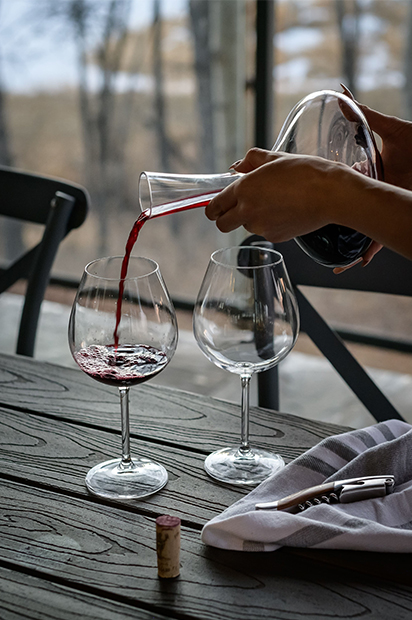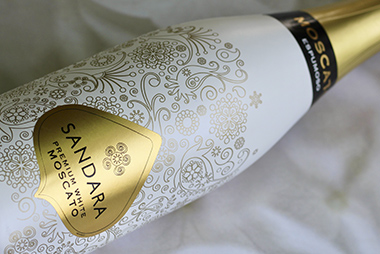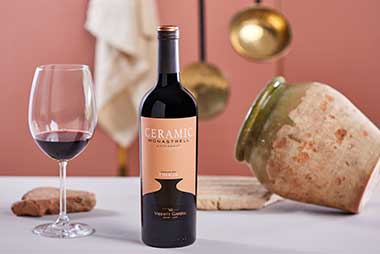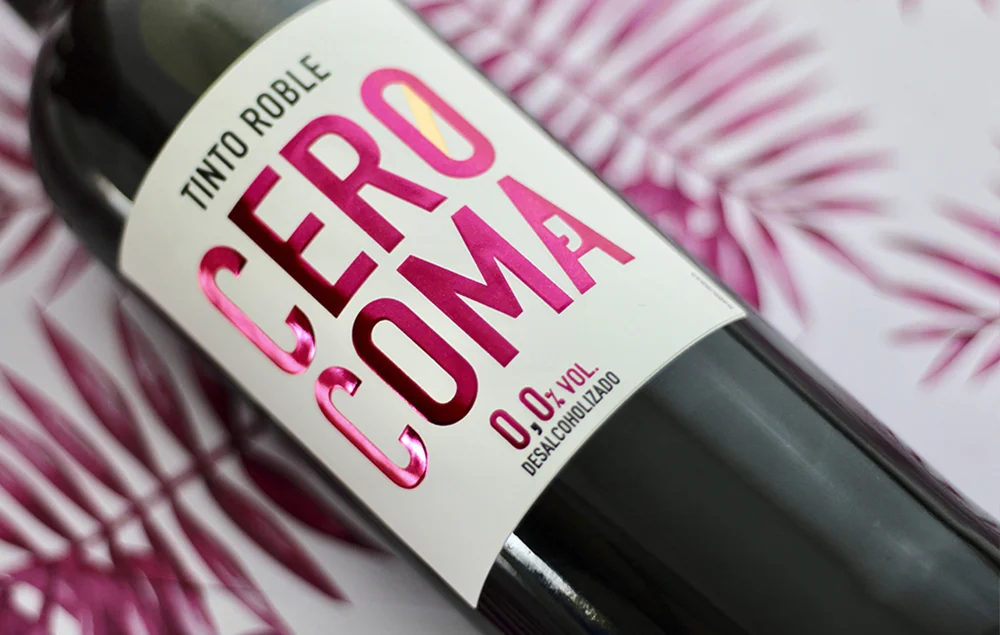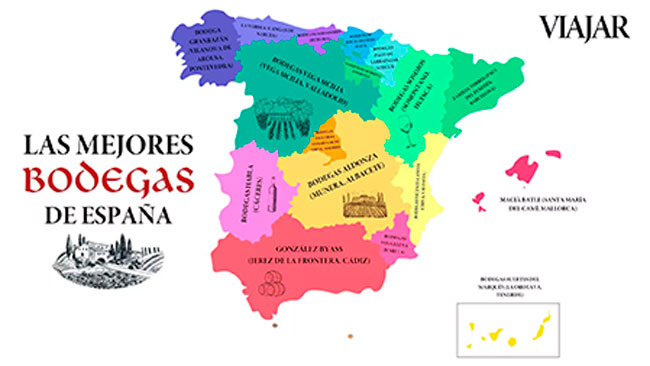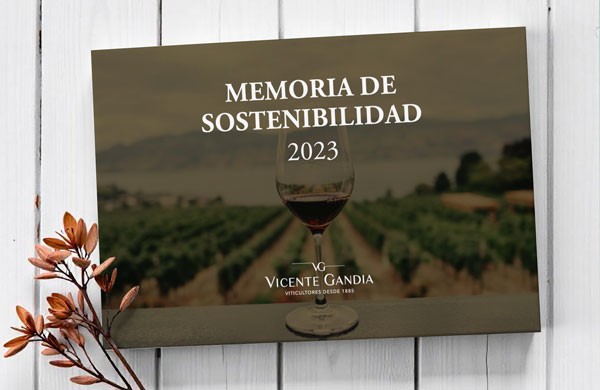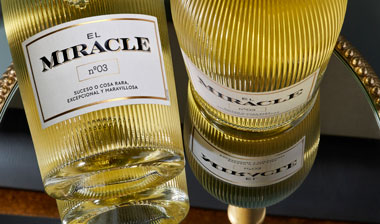In my previous post: How much should I pay for a good wine? I promised to answer the first question I get asked when I meet someone and they find out that I work in a winery: “Do you spend the day drinking wine?” Well, the answer is no. Tasting a wine is not drinking, it seems contradictory, but it is not. In professional tastings the wine is not swallowed, it is spit out and not because it is not liked but because once the wine has moved freely through the mouth and the taste buds, which are on the tongue, the passage through the throat does not provide sensory information. That is the difference between drinking and tasting.
Nor do I mean to say that at a dinner you start spitting the wine on the floor of the restaurant, but you can follow these tips to make yourself an expert
First of all, I must say that tasting is something subjective, nobody usually appreciates the same aromas and nuances in wines, this is directly linked to the education of the nose and mouth, so be free to express yourself without fear of being wrong.
How to taste a wine
The first thing you should do is smell the empty glass, if it smells like dishwasher remains, cardboard, because it is new or any other aroma, you should soak the glass.
How to swirl a glass of wine?
Simply pour a small amount of wine into it and move the liquid across the inside surface of the glass, using circular movements of the wrist. Then discard that small amount of wine in a glass that you are not going to use.
Bonus tip:
In order to waste as little wine as possible, once a glass has been poured, the liquid is passed to the next and after the last glass has been poured, it is thrown away. It is not necessary that the amount of wine be very large.
How much wine should I serve in the glass?
Approximately 150 / 200 ml of wine (depending on the size of the glass it would be 1/5 of its capacity more or less). Remember to always hold the glass by the stem so as not to alter the temperature of the wine.
Bonus tip:
In some restaurants they usually serve red wine somewhat cold so, in this case, an expert would place both palms of his hand on the goblet of the glass to warm the wine a little, this always makes you look like a true “connaisseur” du vin”.
-
– First step to taste a wine, the view.
Let’s get into it, you take the wine glass by the stem and raise it to look at the light.
You should look at the general tone of the wine, the brightness and the color. If there are no impurities, it means that the wine has been made correctly. A bright and translucent wine is also a sign of youth.
Next, tilt the glass a little and look at its color, preferably on a white background, for example, a napkin or tablecloth.
The tones of the red wines range from bright purplish reds for the young to tile reds for the reserves and Crianzas. In the whites and rosés you will be able to better appreciate the clarity of the wine and tones that range from straw yellows to more muted and golden tones for aged or older whites.
Another point where you should focus your attention is on the outside of the oval that the wine forms in the glass when it is tilted (rim). This area is the closest to the mouth of the glass and the shallower you can better appreciate the nuances of the colors in it. In the reds you can discover violet or purple tones and in the whites greenish or orange tones.
The color intensity is called the layer and is classified from lowest to highest as: low, medium or high. This gives you information about the body and solidity that the wine will have in the mouth.
-
– Second step to taste a wine, the nose.
The next step is to smell the wine. Tilt the glass towards you and bring your nose closer to it, without moving the liquid. In this way you will notice the primary aromas that are those that come from the grape variety itself. They can give floral, fruity, vegetable or mineral sensations:
For example, whites tend to deliver more floral and fruity aromas such as roses, jasmine or orange blossom and/or peach, pineapple, pear or apple. The reds usually provide aromas of red fruits and berries as well as mineral aromas such as earth, slate or charcoal. You can also find, more frequently in the whites, vegetable aromas such as freshly cut grass or hay and pepper in the reds. But remember that you can find other aromas that I have not mentioned, that will depend on your own experience.
Subsequently, you must swirl the glass making the liquid rotate on the inner walls of the chalice. The movements must be of the wrist, without moving the hand and checking that the liquid does not overflow because it can happen, and it has happened to me, that the red wine ends up in the white shirt that you just released. That doesn’t look good lol. With this you manage to aerate the wine and open it up to show its secondary and tertiary aromas:
The secondary aromas come from both the malolactic* and alcoholic fermentation processes and depend on the yeasts used and the fermentation temperature. You can discover aromas of bread, yogurt, fresh cheese or banana.
*Malolactic fermentation is generally carried out in red wines and is a process by which. Organisms smaller than yeasts convert malic acid into lactic acid, making the wine lose acidity, gain creaminess and become more balanced and less astringent.
Tertiary aromas are the result of the union of the primary and secondary aromas during the aging time, especially in the bottle, so it is easier to find them in red wines. They are usually aromas of earth, wood or leather.
-
– Third step to taste a wine, the mouth.
Finally, take a small sip of the wine and keep it in your mouth, circulating it throughout the cavity. You must make sure that the wine comes into contact with all the taste buds of the tongue and thus discover all the nuances that the wine can offer you. Once this is done, you must keep the wine in your mouth and with your lips parted, as if you were going to give a kiss, allow air to enter your mouth. This seems a bit absurd, but that way you aerate the wine and it behaves differently than it has done before. It’s like whistling inwards while keeping the wine in your mouth. The greatest precaution you should take is not to choke, it can make you cough and fill the face of the person in front of you with wine, I would not want to be responsible for that.
The first thing you should appreciate in the passage through the mouth is the solidity. A young wine will have less body/consistency than an aged wine, this contribution usually comes from the tannins. Smooth, silky tannins denote quality oak aging. White and rosé wines have higher acidity than red wines and therefore show a greater sensation of freshness. The sensation of warmth in the mouth has to do with the amount of alcohol contained in the wine. The higher the alcohol, the greater the warmth.
On the other hand, you will notice in the mouth those aromas that we were talking about before as they sneak through the nasal passage from the mouth to the nose, so you will appreciate the fruit load of each variety. Here we can talk about fruity sensations such as pear, apple, banana for whites and cherry, strawberry or berries for reds and rosés.
When it is said that a wine is balanced, it is because none of the sensations that we perceive (structure, acidity, alcohol) stands out notably over the others. If so, we can say that we are tassting a good wine.
Once this ritual is complete, you can swallow the wine or spit it out, but what you are sure to get is a standing ovation from everyone who accompanies you.
You are already an expert taster, cheer up!

Artículo escrito por:
Diego Viudez,
Marketing & Export Assistant

